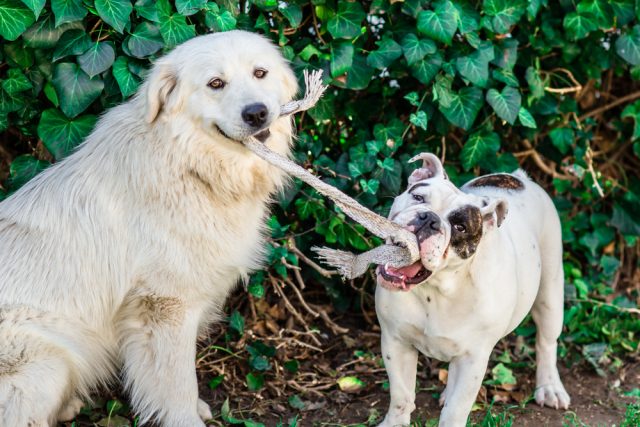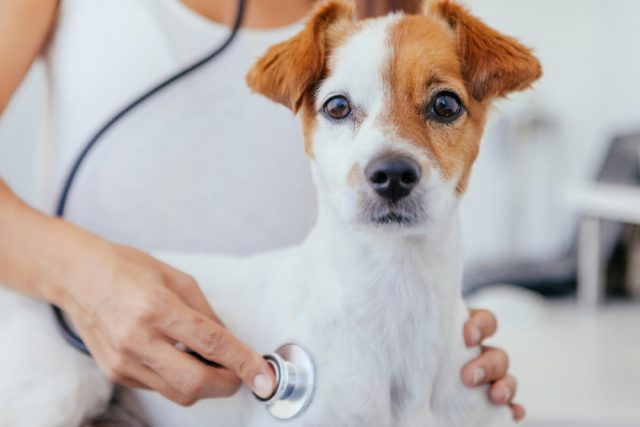The 12 months 2023 marked a big interval in veterinary drugs, notably regarding the well being of our canine companions. A notable outbreak of canine influenza, sometimes called canine flu, raised issues throughout the globe. Canine influenza is a extremely contagious respiratory illness in canines brought on by particular Sort A influenza viruses.
On this complete article, drawing from analysis and findings of Cornell College’s Faculty of Veterinary Medication, we goal to make clear the 2023 outbreak. We’ll talk about the indicators and signs of the illness, important data for canine house owners, and tips on what to do if a canine is suspected of getting contracted the virus.
Understanding Canine Influenza
Canine influenza virus (CIV) is primarily brought on by two strains: H3N8 and H3N2. These viruses are recognized for his or her functionality to quickly mutate, making their unfold and management difficult. The 2023 outbreak has been notably regarding because of the emergence of latest virus strains and their virulence. The analysis at Cornell College has been instrumental in understanding these developments, providing very important insights into the conduct and transmission of those viruses in canine populations.
Indicators and Signs of Canine Influenza
In line with Cornell College, the scientific presentation of canine influenza in canines can vary from no signs to extreme sickness. The commonest signs embody:
- Coughing: That is typically the primary signal and is often a dry, hacking cough that may be mistaken for kennel cough.
- Fever: An elevated physique temperature typically accompanies the cough.
- Nasal Discharge: Initially clear, it might turn out to be thick and coloured because the an infection progresses.
- Lethargy: Decreased power ranges and a noticeable lower in exercise.
- Lowered Urge for food: Canine might present much less curiosity in meals.
- Problem Respiratory: In additional extreme circumstances, canines might exhibit indicators of respiratory misery.
It’s essential to notice that some canines could also be asymptomatic carriers of the virus, that means they will unfold the illness with out exhibiting any indicators of sickness themselves.
Transmission and Threat Components
The transmission of the canine influenza virus happens primarily by means of direct contact with contaminated canines, by means of airborne droplets (from coughs and sneezes), and through contaminated objects (like bowls, leashes, toys, and clothes). Locations the place canines congregate, similar to canine parks, kennels, canine daycares, and grooming amenities, are high-risk areas for the unfold of the virus.
Canine of all ages, breeds, and vaccination statuses will be vulnerable to the virus, however these with pre-existing well being situations or weakened immune methods could also be at a better threat for extreme sickness.
US States With Reported Instances of H3N8 and H3N2
- California
- Colorado
- Florida
- Georgia
- Idaho
- Illinois
- Indiana
- Maryland
- Massachusetts
- New Hampshire
- Oregon
- Rhode Island
- Vermont
- Washington
Prevention and Management Measures
Preventive measures are essential in managing the unfold of canine influenza. Vaccination is the first preventive technique really helpful by Cornell College. Vaccines in opposition to H3N8 and H3N2 can be found and might considerably cut back the danger of an infection. Different preventive measures embody:
- Good Hygiene Practices: Common cleansing and disinfecting of pet areas and objects that come into contact with canines.
- Limiting Publicity: Avoiding canine parks and different communal areas throughout outbreaks.
- Quarantine Measures: Isolating contaminated or uncovered canines from different canines to stop the unfold of the virus.
What to Do If a Canine is Suspected of Having Canine Influenza
If a canine proprietor suspects their pet has contracted canine influenza, rapid steps ought to be taken to stop additional unfold. Cornell College recommends the next plan of action:
- Isolate the Canine: Maintain the suspected canine away from different canines to stop the unfold of the virus.
- Seek the advice of a Veterinarian: Skilled recommendation is essential. The veterinarian might carry out a bodily examination, take a historical past, and will require particular diagnostic assessments to substantiate the presence of the virus.
- Present Supportive Care: Based mostly on the veterinarian’s suggestions, present supportive care to the canine. This contains guaranteeing the canine stays hydrated, is comfy, and will get enough diet.
- Monitor and Report Signs: Maintain a detailed eye on the canine’s situation and report any modifications or worsening of signs to the veterinarian.
- Observe Publish-Sickness Protocols: As soon as the canine recovers, observe the veterinarian’s recommendation relating to reintegrating the canine into its regular surroundings and with different pets.
Therapy and Administration
Presently, there isn’t any particular antiviral remedy for canine influenza. Therapy is especially supportive and focuses on relieving signs and stopping secondary infections. This contains offering enough hydration, guaranteeing correct diet, administering drugs for fever, cough suppressants, and in some circumstances, antibiotics to deal with secondary bacterial infections.
Restoration and Aftercare
Most canines get better from canine influenza inside two to a few weeks. Throughout restoration, it’s important to make sure the canine is comfy and continues to obtain correct care, together with good diet, loads of relaxation, and any prescribed drugs. The restoration interval is essential for the canine’s long-term well being and well-being. You will need to step by step reintroduce the canine to common actions and carefully monitor for any indicators of relapse or issues. Canine house owners must also keep communication with their veterinarian all through the restoration course of to make sure the absolute best final result for his or her pet.
Persevering with Prevention and Public Consciousness
Within the wake of the 2023 outbreak, persevering with schooling and consciousness are very important. Canine house owners ought to keep knowledgeable concerning the newest developments in canine influenza and the really helpful preventive measures. Cornell College suggests ongoing group efforts to boost consciousness about canine influenza, its signs, and methods to stop its unfold.
Proper now, there’s no signal that this canine flu can soar to people.
Future Instructions in Analysis and Veterinary Medication
The 2023 canine influenza outbreak has highlighted the necessity for continued analysis and growth in veterinary drugs. Cornell College and different analysis establishments are specializing in learning the virus’s genetics, transmission patterns, and potential therapies. There’s a rising emphasis on growing simpler vaccines and antiviral drugs, in addition to bettering diagnostic strategies.
In Conclusion
The canine flu outbreak in 2023 is extraordinarily horrifying for pup dad and mom, nevertheless it’s additionally given us an opportunity to study much more about protecting our canines wholesome. Due to locations like Cornell College, we’re getting higher at understanding, stopping, and dealing with these sorts of canine ailments. It’s all about working collectively – vets, researchers, canine house owners, and everybody else who cares about our four-legged buddies. Let’s preserve our eyes open, continue learning, and preserve our pups pleased and wholesome!






